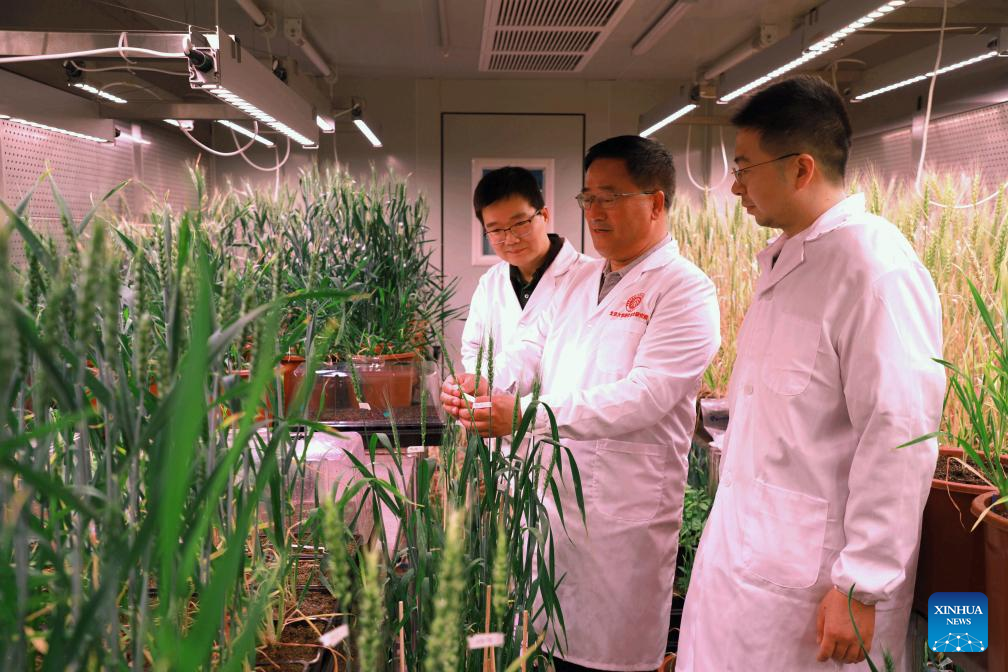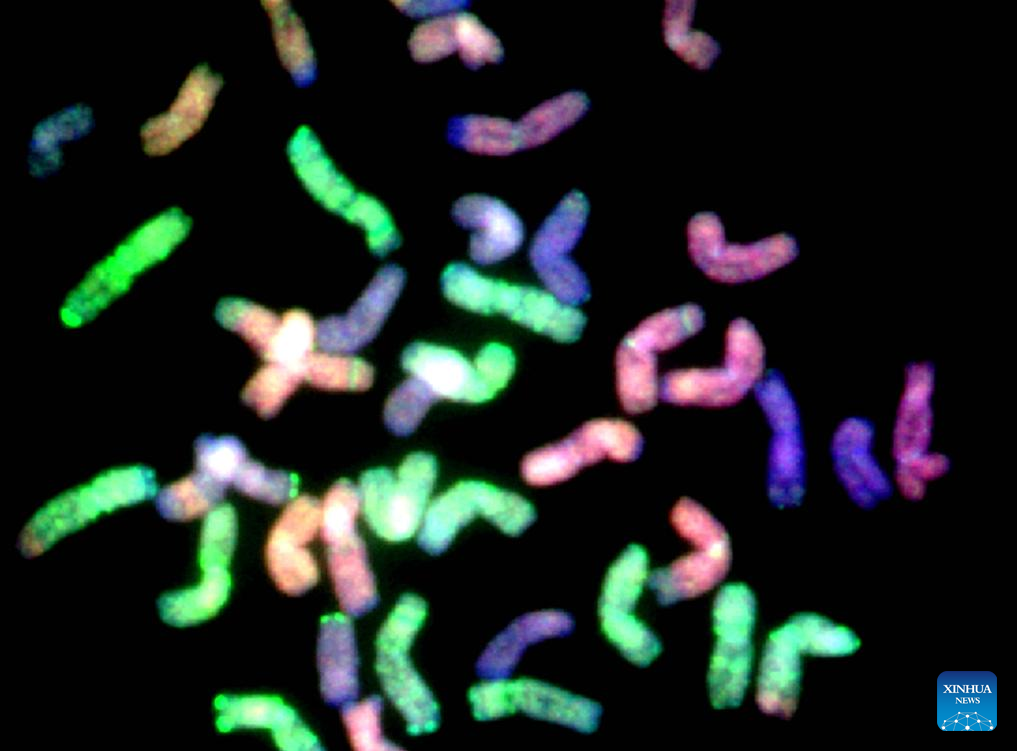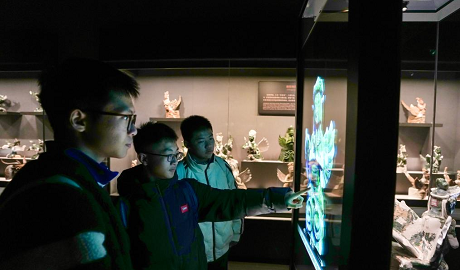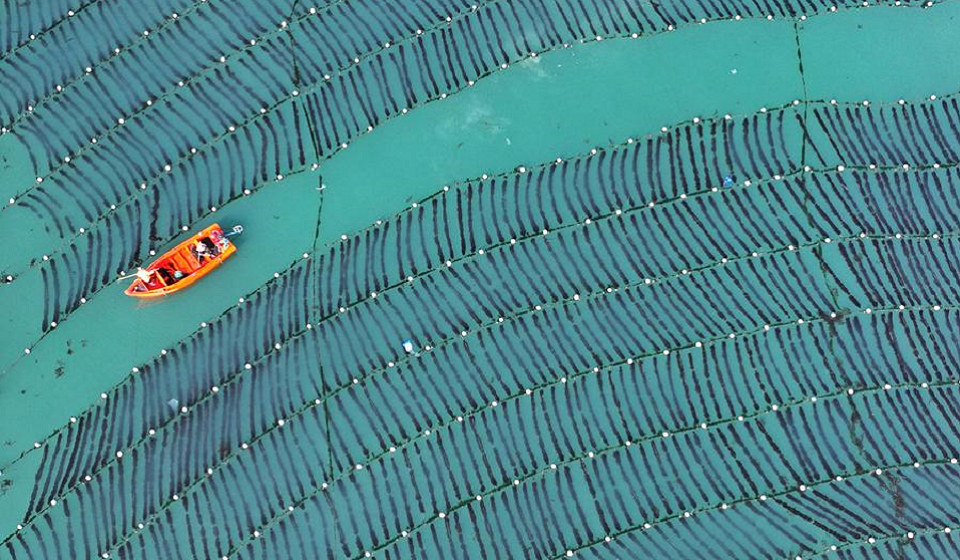


Scientists observe wheat growth at the Institute of Advanced Agricultural Sciences (IAAS) of Peking University in Weifang, east China's Shandong Province, March 25, 2025. (IAAS/Handout via Xinhua)
BEIJING, April 15 (Xinhua) -- Scientists have successfully completed the world's first telomere-to-telomere (T2T) genome assembly of hexaploid bread wheat, marking a major breakthrough in wheat genome research.
Wheat has long been a focus for scientists seeking to improve its yield and quality. However, its exceptionally complex genome has posed persistent challenges for in-depth research and breeding efforts.
Led by the Institute of Advanced Agricultural Sciences of Peking University, the scientists successfully assembled the T2T genome of hexaploid wheat using cutting-edge sequencing technologies and multiple algorithmic approaches. The findings were published in the journal Nature Genetics.
Compared to previous versions, this genome assembly made significant progress in completeness, continuity and accuracy, establishing a solid foundation for functional genomics research. The achievement provides robust scientific support for national food security strategies, said the senior co-corresponding author Deng Xing Wang.
The complete genome serves as a detailed map, allowing -- for the first time -- clear resolution of particularly complex regions in the wheat genome. In addition, the identification of 34,120 new high-confidence genes opens up new avenues for disease-resistant wheat breeding and a wide range of other research initiatives.
This achievement not only deepens the understanding of wheat genome structure and evolutionary mechanisms, but also establishes a paradigm for analyzing other complex polyploid crop genomes, Deng noted.
Leveraging this high-quality reference genome, scientists will be able to more precisely identify key genes related to yield, quality, and disease resistance, paving the way for revolutionary breakthroughs in wheat variety improvement, he said.

This handout microscopic image provided by a research team from the Institute of Advanced Agricultural Sciences (IAAS) of Peking University shows wheat chromosomes captured by the team on March 25, 2024. (IAAS/Handout via Xinhua)

Students engage in cultural heritage education at Xixia Imperial Tombs archaeological site park

Cute, bouncy, viral: China's dolphin mascots take over the internet


Economy&Life | Shandong builds marine farms to enrich "blue food depot"

Yuyuan Road Historical and Cultural Block in Shanghai integrates art into daily life
点击右上角![]() 微信好友
微信好友
 朋友圈
朋友圈

请使用浏览器分享功能进行分享
